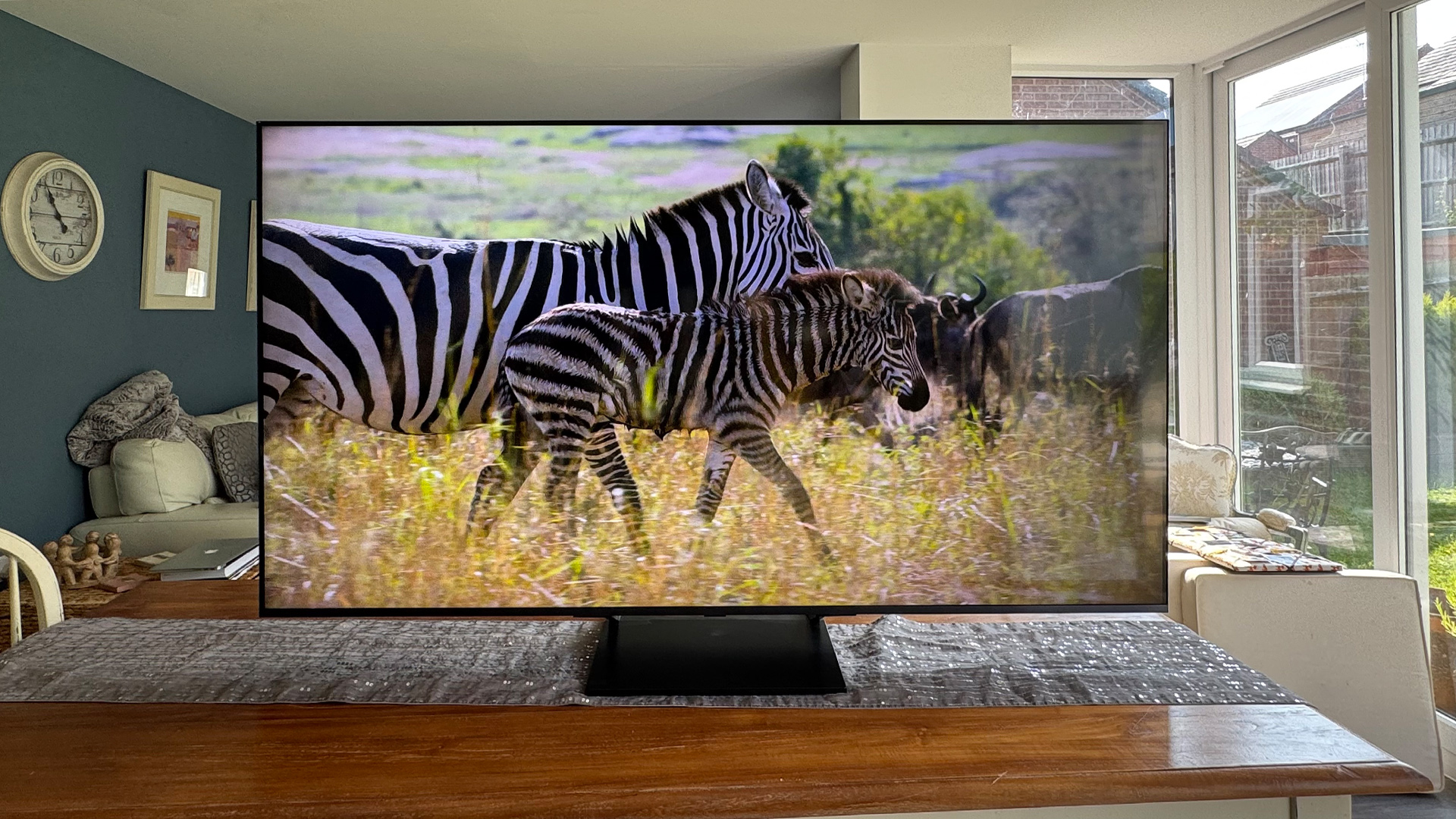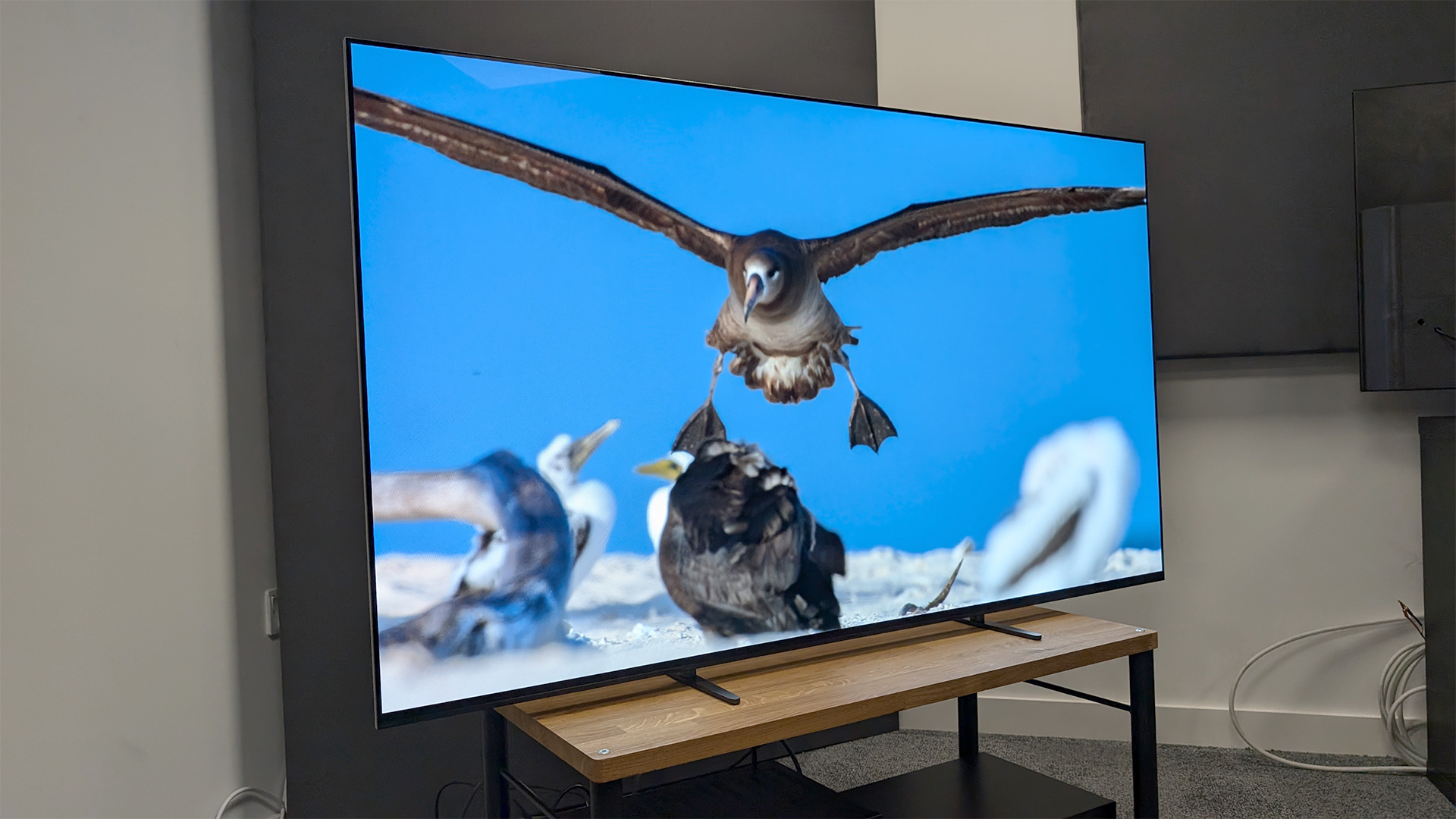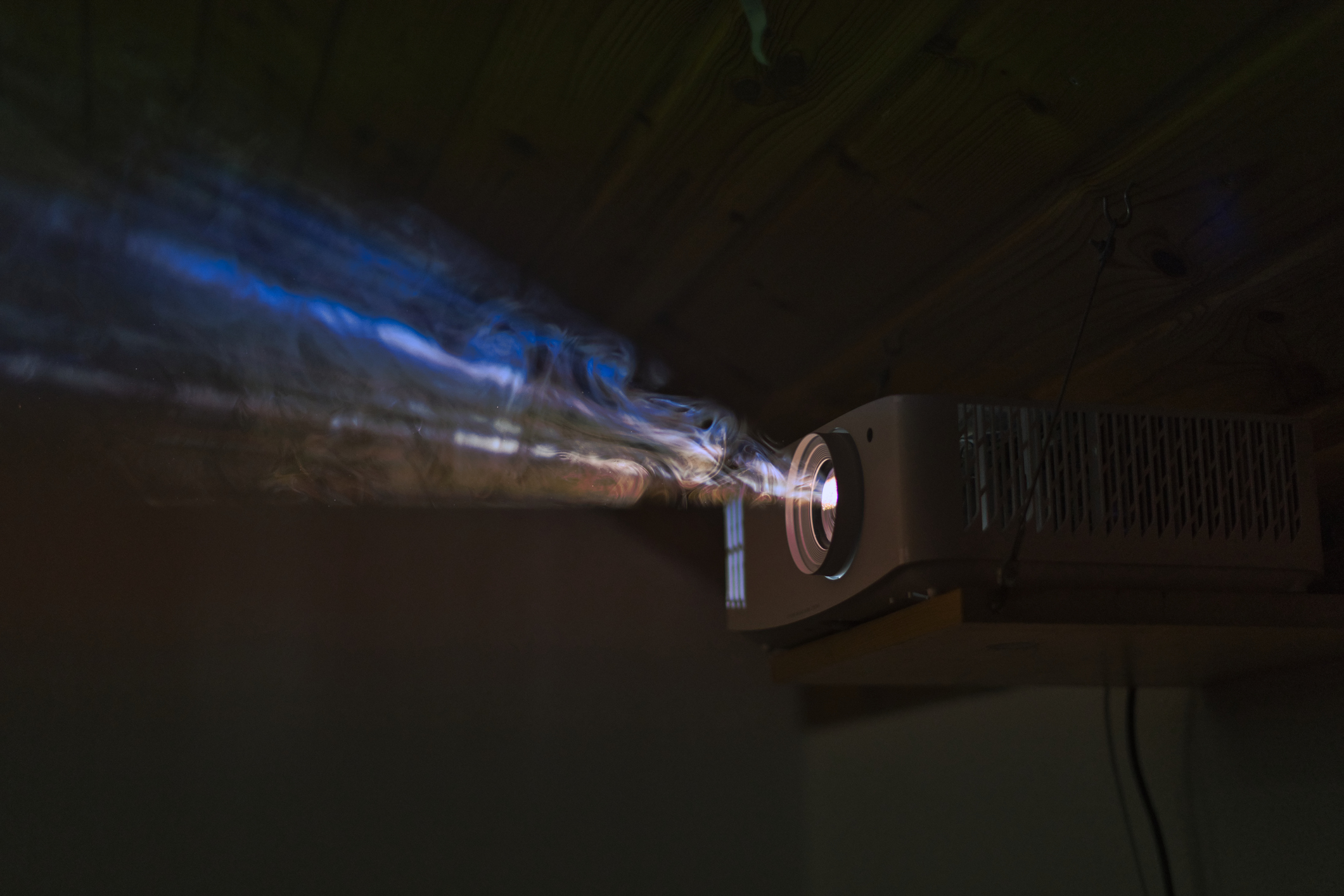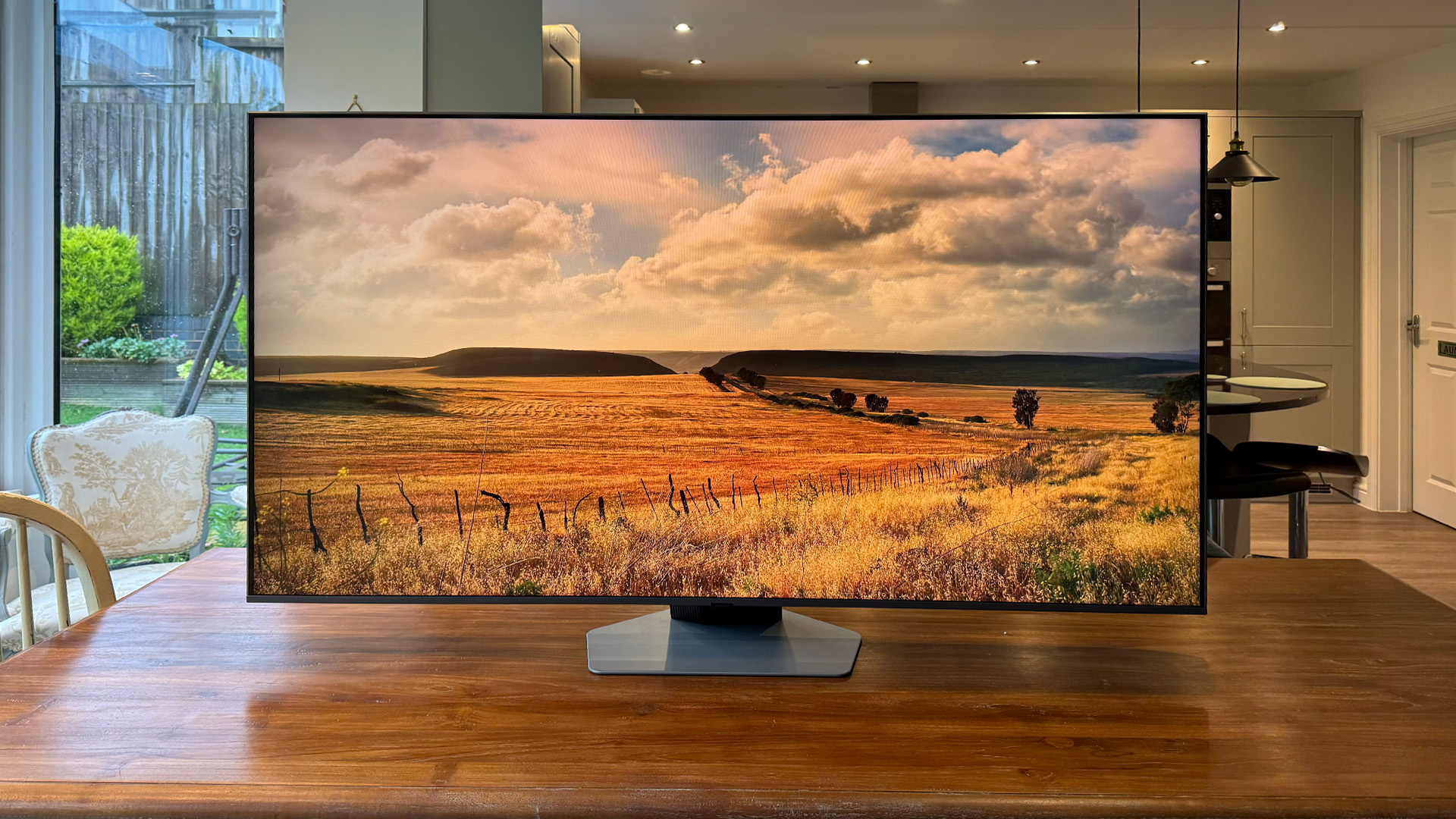What is the 'soap opera effect' on TVs? Why is it so hated? And how do you avoid it?
SOE is the enemy of great picture quality – so how do you get rid of it?

Ever noticed that your TV picture sometimes looks too smooth — almost like a daytime soap opera, even when you’re watching a movie? That’s what people call the soap opera effect (SOE).
It happens when a TV feature called motion smoothing (or frame interpolation) is turned on. This setting makes fast-moving scenes look clearer by adding extra frames between the original ones – but it also changes how the video was meant to look.
Some viewers like the extra-smooth motion, saying it makes sports and action scenes look more realistic. Others find it distracting and prefer to see movies as the director intended, with the natural motion of the original frame rate.
If this all sounds a bit technical, don’t worry – our guide will walk you through what causes the soap opera effect, why TVs do it, and how you can adjust it to your liking.
Where does the 'soap opera effect' name come from? And why do higher frame rates change the look of content?

As mentioned, the soap opera effect refers to the perceived consequences of applying the motion smoothing features built into today’s flat-panel TVs.
But the term itself comes from the hyper-real and video-captured look of digital broadcast TV – especially soap operas, studio news, and current affairs shows.
These programmes are shot with video cameras at 25 fps (UK, Australia) or 30 fps (USA). However, because they are broadcast using interlacing, the viewer actually sees motion sampled at 50 fps or 60 fps. This gives video-based shows a smoother, more immediate feel than film.
The latest hi-fi, home cinema and tech news, reviews, buying advice and deals, direct to your inbox.
Motion picture films, by contrast, were – and mostly still are – shot at 24 fps. In the case of photographic celluloid film, analogue cameras chemically expose 24 individual frames each second using complex motors and shutter devices.
Over the last quarter of a century, filmed entertainment has mostly transitioned from capture with film to capture with digital cameras. However, 24 fps has stuck and been the predominant budgetary and creative choice of filmmakers.
That difference of just a few frames per second between broadcast TV content and cinematic film creates a different viewing experience and associated characteristics.
Now, it gets a little more nuanced. You might rightly ask why 25 fps to capture broadcast content (as mentioned above) should look noticeably different to 24 fps?
UK and Australian broadcasters, for example, shoot at 1080i50 with 50 interlaced frames per second. When this is combined with specific studio lighting techniques, the resulting video content looks more ‘soap-opera-like’.
Let’s say you shoot some content at 30 fps. For want of better adjectives, the image will look more ‘immediate’ and ‘live’. That’s why many documentary filmmakers choose to shoot at this faster frame rate. Detail and motion perception are enhanced for the viewer. It’s almost as if you can ‘jump into’ the image.
Conversely, 24 fps content suffers from less smooth and more ‘stuttery’ motion. But the upside is that the film or programme almost looks as if it were shot in the past. The lower frame rate lends to a ‘dreamier’ or more surreal look even.
It’s this impressionistic characteristic that moviemakers love, making it perfect for long-form action adventures, dramas and historical subjects. It’s literally easier to transport the viewer to another world. We might refer to it as the ‘magic of cinema’.
Tom Cruise and director Christopher McQuarrie famously released a social media video urging the public to watch cinema films on all devices, including their own Mission: Impossible series, without motion smoothing of any kind applied.
What is the origin of 24 frames per second?

Up until the mid-1920s, silent cinema films were typically projected at 16 fps (or less). This led to a more jaggy and uncomfortable viewing experience for the audience, as the time in between each frame’s exposure on screen was greater in length.
But the movie industry consolidated on 24 fps after the emergence of ‘talkies’ (early movies with sound).
Not only did 24 fps lead to a viewing experience with much smoother motion, but it was ideal for cinema projectors to synchronise with the new time-interlinked sound systems.
Since the emergence of digital projectors in cinemas in the early noughties, some film directors made the creative decision to shun 24fps and instead shoot and project their works with higher frame rates.
Both Peter Jackson’s The Hobbit Trilogy and James Cameron’s Avatar: The Way of Water were notable examples, both employing 48 fps for what they felt was more vivid and impactful imagery.
But, as mentioned earlier, 24 fps has remained the creative choice for most filmmakers to this day.
So, what is the soap opera effect when it applies to my TV?

The act of adding more frames to any type of content has the effect of smoothing motion or reducing blur. This leads to a look that more closely resembles a soap opera or TV broadcast.
Frame interpolation is the digital fabrication of extra frames in between the native and existing frames in the content.
For example, you might increase the frame rate of a 24 fps movie to 60 fps. Or you might wish to watch sports at 120 fps to track the motion of the ball more seamlessly.
Some of the frame interpolation or motion smoothing features built into TVs include proprietary names, such as TruMotion (LG), Auto Motion Plus (Samsung), AquoMotion (Sharp) and Action Smoothing (TCL).
However, these monikers can change from brand to brand and series to series. You will need to refer to your device’s manual to learn about the specific feature names and associated frame rates available.
It’s worth bearing in mind that gamers are advised not to use motion smoothing features as they can inhibit the input lag and create unwanted picture artefacts. These can include ghosting and, of course, the soap opera effect itself.
Most TVs also include blur reduction and judder reduction sliders inside the ‘Motion Smoothing’ or other similarly named menu. These enhance the effects of frame interpolation and should reduce the look of the soap opera effect.
Blur reduction tackles motion blur, as the name suggests, in faster motion scenes. Judder reduction, by contrast, can particularly help with inconsistencies of film frames at 24 fps. Frame interpolation by itself can sometimes insert a frame identical to the previous one, for example, which can cause this stuttering effect. At other times, the interpolated images break up during, say, fast-moving scenes or when an object on-screen rotates and the edges of the object lose definition.
Note also that these two menu items impact different types of content. Blur reduction influences native content of 60 fps, while judder reduction affects content of 30 fps and less (such as 24 fps film).
Neither of these features, which are often standard on today’s TVs, uses frame interpolation in its electronic processes, but rather they are designed to enhance it.
So, is the soap opera effect good or bad?

It really comes down to your own personal taste, but as cinematic purists, we're broadly against it.
It is possible to add a small amount of smoothing to a movie, to remove the worst of the judder, without introducing an over-processed, soap opera effect. But adding so much processing that motion looks unnatural isn't something we recommend.
That said, to some it might still be appealing. Those who are not used to frequenting cinemas, watch films on portable devices, or take much less interest in movies as art, can be less inclined to view content in its native frame rate.
However, even though frame interpolation for 24 fps movies can make the action look more vivid or tactile, it can have the unintended effect of lessening the scale or what we might call the ‘abstract’ nature of the work.
MORE:
Here's our broader explainer on what is motion handling?
These are the best TVs you can buy right now
And here's our explainer on Filmmaker Mode, which usually turns off all motion smoothing
Martin Dew is a freelance contributor to What Hi-Fi?'s TV and AV section. With multiple decades experience he has worked as both a journalist and internal industry expert at big name company's, including the THX Division of Lucasfilm Ltd at Skywalker Ranch.
You must confirm your public display name before commenting
Please logout and then login again, you will then be prompted to enter your display name.
